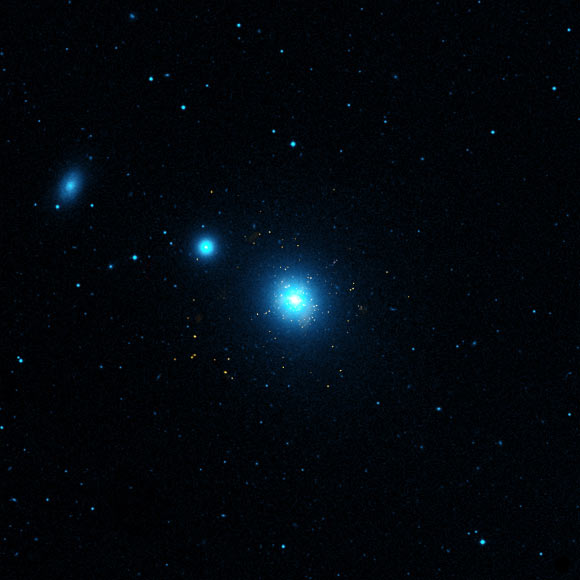Australian and U.S. astronomers using NASA’s Hubble Space Telescope and the W.M. Keck Observatory’s 10-m telescope in Hawaii have found a new kind of star cluster.

Prof Forbes with colleagues identified a number of star clusters with properties not seen before in the nearby elliptical galaxy NGC 4278. This composite image shows the galaxy NGC 4278 (X-Ray: NASA / CXC / MPA / M.Gilfanov and A.Bogdan; infrared: 2MASS / Umass / IPAC-Caltech / NASA / NSF; optical: DSS).
“Old, compact star clusters, such as globular clusters, are well known to amateur astronomers. Although globular star clusters were first discovered in 1665, it has taken more than 340 years to fully appreciate all the different types of star clusters that are made in the Universe,” explained Prof Duncan Forbes from the Swinburne University of Technology, lead author of a study published in the Monthly Notices of the Royal Astronomical Society.
Prof Forbes and colleagues discovered several star clusters with sizes asnd masses that were previously not known to exist.
“We now know that star clusters have a rather continuous range of size and mass without any gaps in their properties,” Prof Forbes said.
Study co-author Prof Jean Brodie of the University of California said that the discovery was “made possible by using the Hubble Space Telescope to measure the sizes of the star clusters and long exposures on the DEIMOS instrument fitted to the Keck II telescope to obtain distances and confirm their status.”
The scientists also measured the color of the star clusters, finding the lower mass ones to be red and the higher mass ones to be blue in color, suggesting differences in their chemical composition.
“No single model for the formation of these star clusters can currently reproduce the diversity of structural properties we have observed for old star clusters,” Prof Forbes said.
“Our observations present a challenge to researchers aiming to reproduce star clusters in computer simulations.”
______
Bibliographic information: Duncan A. Forbes et al. Filling the gap: a new class of old star cluster. MNRAS, published online July 31, 2013; doi: 10.1093/mnrasl/slt078







